Seagulls, with their graceful flight and distinctive calls, are a common sight in coastal areas. But have you ever wondered where these birds sleep? From sandy beaches to urban buildings, seagulls have unique sleeping habits and preferences.
Indeed, a seagull can sleep in different places and it looks like being sleepy is all they prioritize. However, you must be here because you want to know about the fact well.
In this article, we will explore the locations, behaviors, and adaptations of seagulls when it comes to their sleeping habits. So, don’t skip anything, and keep reading to learn about some surprising factors.
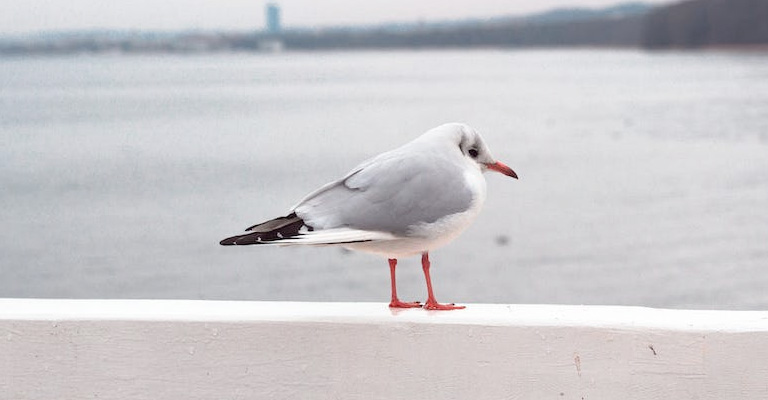
Locations Where Seagulls Sleep
Seagulls can sleep in varieties of locations including in their nests. Here is a descriptive list of the places where a seagull can sleep.
Beaches, Sandbars, and Coastal Fields
Seagulls often choose beaches, sandbars, and coastal fields as their sleeping spots. These areas provide open spaces and a clear view of the surroundings, allowing them to detect any potential predators approaching.
The sandy or grassy terrain offers a comfortable resting place, and the proximity to the water ensures easy access to food sources, such as fish and other marine organisms.
Cliffsides and Rocks
Cliffsides and rocks serve as natural perching spots for seagulls, particularly in areas with rugged coastlines. These elevated locations provide seagulls with a vantage point to monitor their surroundings while keeping a safe distance from predators.
The uneven surfaces and crevices of the cliffs and rocks offer shelter and protection, making them suitable for seagulls to rest and sleep.
Buildings in Urban Areas
Seagulls have also adapted to urban environments and can be found perched on buildings, rooftops, and other man-made structures. Urban areas provide seagulls with ample opportunities for scavenging food from garbage bins and human activities.
Buildings offer elevated perches that mimic natural cliffsides, allowing seagulls to rest and sleep while keeping a watchful eye on potential food sources.
Water Bodies Like the Sea, Lakes, and Reservoirs
It is not uncommon to spot seagulls sleeping on the water, whether it be in the open sea, lakes, or reservoirs. Seagulls have developed the ability to sleep while floating, resembling rubber duckies bobbing on the surface.
This behavior allows them to rest in a relatively safe environment, away from land-based predators. Sleeping on the water also provides seagulls with easy access to aquatic food sources, including fish and small invertebrates.
Seagulls exhibit versatile sleeping habits and can be found in various locations depending on their surroundings.
Whether it’s beaches, cliffsides, buildings, or water bodies, seagulls choose sleeping spots that offer safety, access to food sources, and a good vantage point to monitor their surroundings.
Factors Influencing Sleeping Locations
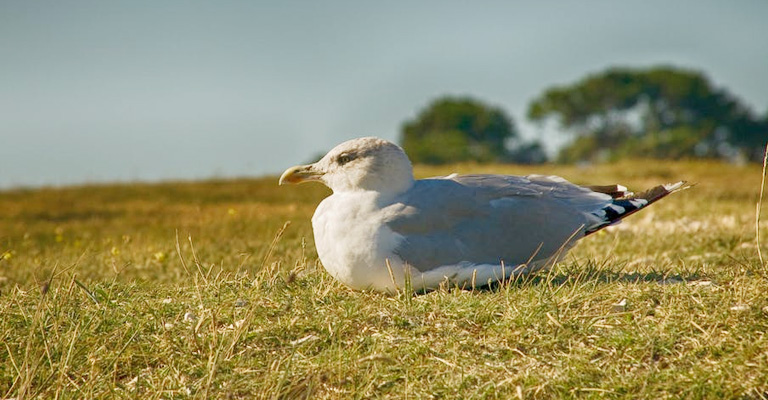
There are a few factors that effectively influence the sleeping location of seagulls. You need the learn them well and you can do that from the below points.
Safety and Protection From Predators
One of the key considerations for seagulls when selecting a sleeping location is safe from potential predators.
Seagulls prefer open areas that provide a clear view of their surroundings, allowing them to detect any approaching predators, such as birds of prey or land-based animals.
Locations like beaches, sandbars, cliffsides, and buildings offer elevated positions or wide open spaces that give seagulls an advantage in spotting and avoiding threats, ensuring their safety during rest and sleep.
Accessibility to Food Sources
Seagulls are opportunistic feeders and rely on various food sources for their survival. The proximity of their sleeping locations to food sources is another crucial factor influencing their choice.
Seagulls often select sleeping spots near water bodies like the sea, lakes, and reservoirs, where they can easily access aquatic food sources, including fish and small invertebrates.
In urban areas, seagulls may choose sleeping spots close to human settlements, where they can scavenge for food from garbage bins or take advantage of discarded food.
Availability of Nesting Sites
Nesting is an important part of seagull breeding and reproduction. While not all sleeping locations are necessarily nesting sites, the availability of suitable nesting sites can influence seagulls’ choice of sleeping areas.
Cliff faces, rocks, and buildings with ledges or flat surfaces can serve as potential nesting sites for seagulls. The proximity of suitable nesting sites to their sleeping locations allows seagulls to establish territories, protect their nests, and ensure the safety of their offspring.
Sleeping Habits and Behaviors of Seagulls
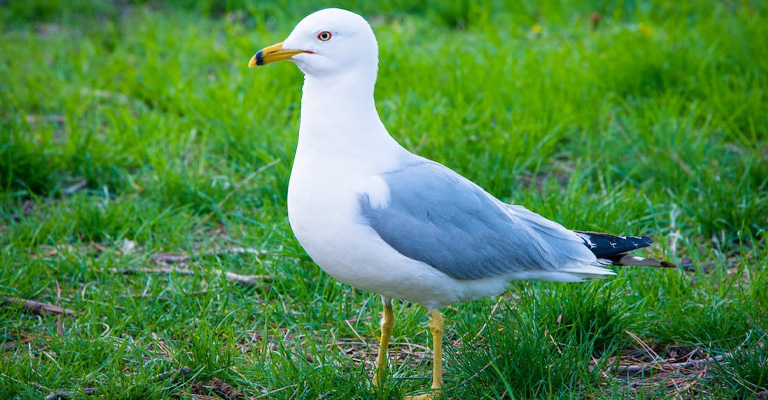
About the sleeping habits and the behaviors of the Seagulls, there are some surprising facts. I think you will find them interesting. Let’s check them out.
Preference for Open Areas With a Good View
Seagulls prefer sleeping in open areas that provide them with a good view of their surroundings. This preference is driven by their need to detect any incoming predators.
Whether it’s beaches, sandbars, coastal fields, or even urban areas, seagulls will choose sleeping locations that offer unobstructed views.
By positioning themselves in open areas, seagulls can stay alert and quickly react to potential threats, ensuring their safety during sleep.
Sleeping on the Water
Many species of seagulls have the unique ability to sleep on the water. You might have observed seagulls floating on the sea, lakes, or reservoirs.
Sleeping on the water provides seagulls with a safe and secure environment, as it reduces the risk of land-based predators reaching them while they rest.
This behavior is particularly common in seagulls that inhabit coastal regions and depend on marine food sources.
Perching on Elevated Structures
Seagulls also exhibit the behavior of perching on elevated structures when it comes to sleep and rest. Cliff sides, rocks, and buildings in urban areas with ledges or flat surfaces serve as preferred perching spots for seagulls.
These elevated structures provide seagulls with vantage points, allowing them to monitor their surroundings effectively.
By perching on elevated structures, seagulls can maintain a higher level of safety by staying out of reach of potential ground-based predators.
Secure Spots on the Ground
While seagulls often prefer elevated structures, they also make use of secure spots on the ground for sleeping and resting. In areas where suitable perching locations are scarce, seagulls will find secure spots on the ground that offer protection and concealment.
These spots may include secluded patches of vegetation, rocky outcrops, or other areas that provide cover from predators and offer a sense of security during sleep.
Seagulls display specific sleeping habits and behaviors that reflect their need for safety and security. They prefer open areas with a good view, allowing them to monitor their surroundings for potential threats.
Seagulls also exhibit the ability to sleep on the water, finding refuge from land-based predators. They make use of elevated structures for perching, ensuring a strategic advantage in predator detection.
Nocturnal Behavior of Seagulls
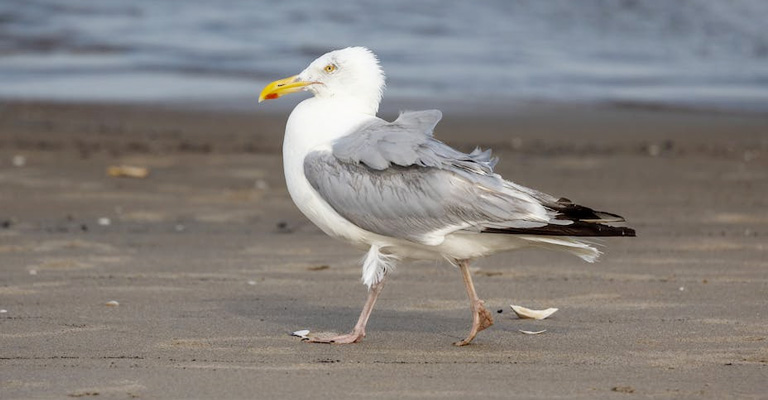
Besides the above contexts, there are some other sections you need to learn about to understand this fact. One of them is their nocturnal behavior.
Their Activity Patterns at Night
Seagulls, like many other bird species, exhibit certain levels of activity during the night. While they are not considered strictly nocturnal birds, some seagulls may engage in activities such as feeding, socializing, or even flying during the nighttime hours.
These nighttime activities can vary depending on factors such as the availability of food sources, breeding season, and environmental conditions.
Seagulls may take advantage of reduced competition and potential food opportunities during the night, leading to increased nocturnal activity.
Sleep-wake Cycles of Seagulls
Seagulls, like most birds, have distinct sleep-wake cycles that regulate their rest and activity patterns. Their sleep-wake cycles are influenced by factors such as daylight duration and environmental cues.
Typically, seagulls are diurnal, meaning they are primarily active during the day and rest during the night. Their sleep periods are characterized by periods of deep sleep, during which they can be observed perched or nestled in secure spots.
However, it’s important to note that seagulls have the ability to remain alert and responsive even during rest, as they need to be vigilant against potential predators.
Seagulls’ sleep-wake cycles can be influenced by various factors, including seasonal variations in daylight duration. During the breeding season, when seagulls may have chicks to protect, their sleep-wake cycles may be modified to ensure the safety and care of their young.
Additionally, seagulls may also adjust their sleep-wake patterns based on the availability of food sources, as they need to actively forage during daylight hours.
While seagulls are primarily active during the day, they do exhibit some level of activity at night, especially when it comes to feeding and socializing.
Their sleep-wake cycles are regulated by factors such as daylight duration and environmental cues. Seagulls maintain periods of deep sleep during the night, but their ability to remain vigilant and responsive even during rest is essential for their survival.
Understanding the nocturnal behavior of seagulls provides valuable insights into their overall behavioral patterns and adaptations to their environment.
Nesting and Sleeping
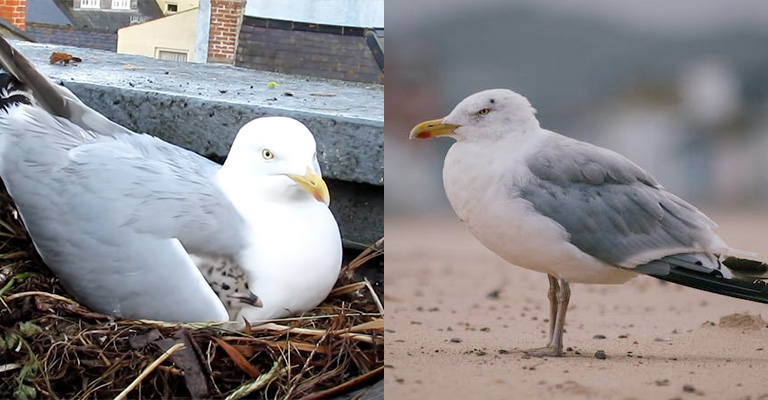
Though Seagulls live in the sea, they have a habit to make nests and they love to sleep in the nests. The following fact will make things clear for sure.
Nesting Habits of Seagulls
Seagulls have specific nesting habits, typically preferring locations on cliff faces, rock outcrops, or elevated structures.
These nesting sites provide seagulls with a vantage point to observe their surroundings and defend their territory from potential intruders.
Seagulls are territorial birds and do not usually share their nests with other bird species. They become quite protective and territorial when it comes to their nesting sites, exhibiting aggression toward any perceived threats.
The construction of seagull nests varies depending on the species, but they generally consist of materials such as twigs, grass, seaweed, and feathers.
Seagulls may build nests in colonies or as solitary pairs, depending on the species and the availability of suitable nesting locations. These nests serve as a secure and sheltered spot for seagulls to lay their eggs and raise their young.
Sleeping in Nests When Raising Young
When seagulls are raising their young, they typically sleep in their nests. This is especially important during the incubation period when the eggs require constant warmth and protection.
Seagulls take turns incubating the eggs, with one parent staying in the nest while the other goes foraging. The parent in the nest remains attentive to the eggs, ensuring their safety and providing them with the necessary warmth.
Seagulls also sleep in nests during the early stages of their chicks’ development. The nest provides a familiar and secure environment for the young birds, protecting them from predators and adverse weather conditions.
Both parents take turns caring for the chicks and keeping them warm during the night. The nests serve as a central hub for the family unit, providing a sense of security and cohesion.
Seagulls exhibit specific nesting habits, choosing locations on cliffs, rocks, or elevated structures for their nests. These nests provide seagulls with a secure vantage point and serve as a territorial defense against intruders.
Adaptations for Sleeping in Different Locations
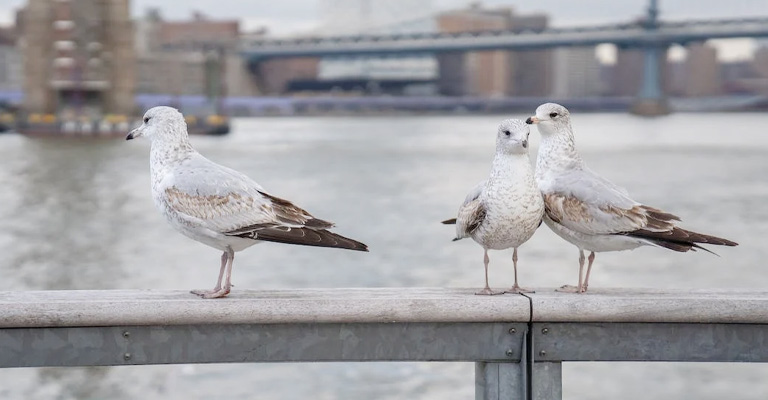
Seagulls have specific physical adaptations that allow them to sleep on water. Their feathers play a crucial role in this adaptation. Seagull feathers have specialized oils that make them waterproof.
These oils are produced by a gland located near the base of their tail, known as the preen gland. When seagulls groom themselves, they distribute these oils throughout their feathers, creating a waterproof barrier.
This adaptation prevents their feathers from becoming waterlogged and helps them float on the water’s surface while sleeping.
Additionally, seagulls have webbed feet, which aid in swimming and maneuvering on the water. Their webbed feet provide stability and allow them to paddle or walk on the water’s surface, further facilitating their ability to sleep on water bodies.
Behavioral Adaptations for Sleeping on Cliffs and Buildings
When seagulls sleep on cliffs and buildings, they exhibit several behavioral adaptations to ensure their safety and comfort. One of these adaptations is their preference for elevated structures that provide a good vantage point.
By selecting high perches, such as cliffs or buildings, seagulls can have a clear view of their surroundings, which helps them detect potential predators or threats approaching their sleeping area.
Seagulls also exhibit communal roosting behavior, especially in urban areas where suitable sleeping locations may be limited.
They gather in large numbers to sleep in close proximity, offering them safety in numbers and increased awareness of potential dangers.
Communal roosting also provides them with the opportunity to exchange information and communicate with other seagulls, enhancing their overall vigilance and defense against predators.
Sleeping Adaptations of Seagulls in Different Locations
| Location | Physical Adaptations | Behavioral Adaptations |
| Water bodies | – Waterproof feathers | – Floating on water |
| – Webbed feet for swimming and stability | ||
| Cliffs and Buildings | – Selecting elevated perches for a good view | |
| – Communal roosting behavior for safety and increased vigilance |
FAQS
Yes, seagulls typically sleep with both eyes closed. Like most birds, they have a protective membrane called the nictitating membrane that covers their eyes when they are asleep.
This membrane helps to keep their eyes moisturized and shielded from potential dangers while they rest.
The sleep patterns of seagulls can vary, but they typically engage in short periods of sleep throughout the day and night. Seagulls are not strictly nocturnal or diurnal, so they may sleep for shorter durations at multiple intervals.
These sleep bouts can last anywhere from a few seconds to a couple of minutes.
Seagulls are generally not noisy while they sleep. They tend to be quieter during their resting periods as they conserve energy and maintain a state of rest.
However, seagulls may vocalize or make occasional sounds during their sleep if they sense any disturbances or feel threatened.
Seagulls have several mechanisms to protect themselves while sleeping. One of the main strategies is selecting sleeping locations that offer safety and good visibility, such as elevated structures or open areas with a clear view of potential predators.
Additionally, communal roosting behavior allows them to sleep in larger groups, providing safety in numbers and enhancing their ability to detect and respond to threats.
Conclusion
Seagulls exhibit fascinating sleeping habits and behaviors, adapting to various locations and environmental conditions.
They prefer open areas with good visibility, sleep on water or perched on elevated structures, and secure spots on the ground.
While not strictly nocturnal, seagulls have sleep-wake cycles and exhibit nesting behaviors when raising young. These adaptations contribute to their survival and ability to thrive in diverse habitats.
Hopefully, you have understood the fact of Seagull’s sleeping habit well. For more questions, you can ask them in the comment section. Thank you in advance.